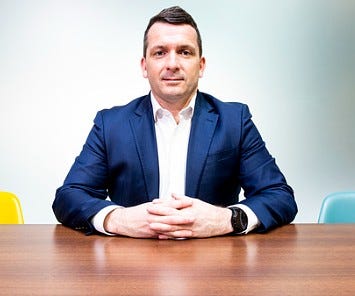Supporting the IT Channel On Its Decarbonization Journey
Partners build strategies that meet and exceed customers' sustainability goals, along with green solutions.

Today all channel partners understand the need to invest in building a sustainable business. Driven by customer expectations, they realise that if they overlook sustainability in their own organizations, they may quickly become less relevant to prospects and customers.
It's therefore essential that partners across the ecosystem collaborate to create new, more sustainable business practices. For these partners, sustainability isn't just about having green solutions or offerings; it's about weaving sustainability into the fabric of their organizations. However, their journeys toward sustainability are often at different stages — some partners are already navigating their own path, while others are still on the starting blocks.
The State of the Market
At the same time, a high percentage of partners think they're more advanced in their sustainability journey than they are. A 451 Research report, for example, found that 75% of partners believe they have a full life cycle sustainability programme for at least part of their IT infrastructure, but for 48%, their evaluation of their own maturity didn't match reality. That means they're not going to deliver on the output of the expectation — which is a huge challenge for partners.
The situation is further exacerbated by partners' struggle to optimize their energy use, obtain consistent data and metrics as to their energy consumption and leverage a skilled workforce. Partners today clearly need industry support to prepare for the challenges they face — especially where energy and sustainability are concerned.
A Strategy for Sustainable Operations
Currently, we're seeing a growing trend of channel collaboration where decarbonization is concerned, and many organizations across the ecosystem are coming together to build strategies that meet and exceed customer' sustainability goals.
Vendors, for example, are taking steps to support partners at every stage of their journey — from strategy setting to execution — and often based on three pillars: strategize, digitalize and decarbonize, which we believe are integral to address the climate challenge.
From a strategy perspective, today's partners and end users must understand what's required to procure green energy, as well what's needed to understand how they use their energy and measure it. This requires a multitude of skill sets — ranging from sustainability consultancies to working with vendor-led technologies — and the ability to interpret data in a simplistic, yet actionable way.
Another key consideration is the need to produce a road map for decarbonization, one which engages the whole ecosystem. Openly communicating these commitments will also help partners create accountability within their businesses and encourage collaborative efforts to exceed objectives.
By digitalizing processes, partners can better monitor how they use resources and any accompanying carbon emissions. With the right approach, they'll also be able to identify energy savings, and report and benchmark their progress against measurable targets, which is vital to meet net-zero targets.
For many, decarbonization ultimately means replacing existing energy sources with greener, cleaner alternatives, electrifying operations and reducing energy consumption by identifying greater efficiencies. The good news is that the technology that enables businesses to achieve this already exists.
Reducing Emissions
Soon, large enterprises will also have to start reporting on their Scope One, Scope Two and Scope Three emissions. These levels characterize the different kinds of carbon emissions a company creates in its own operations, and in its wider value chain. For some businesses, being able to collect, understand, and report on that data will be a challenge — particularly as new directives and regulations start to filter down to small and medium sized enterprises.
For many partners, building a tailored strategy to improve sustainability is an important first step, but one which requires a clear baseline from which to work. Leveraging software-as-a-service (SaaS) solutions can help businesses — both end-users and partners — begin to calculate, measure, and analyze their carbon emissions and thereafter, set accurate, achievable decarbonization goals.
Access to diverse skill sets and the ability to combine actionable data with a bespoke strategy, or road map, is also integral to success. Connecting with an ecosystem of solution providers specialising in energy efficiency and renewables will accelerate the process significantly and will often remove the need for a business to have prior knowledge of how to implement a sustainability strategy.
Leveraging technology as an enabler lets partners work directly with vendors and the ecosystem for the competencies their project requires the most, helping them to define a clear and demonstrable return on investment.
A Greener Future
Despite the current macroeconomic headwinds, sustainability remains a priority in the channel, with increasing regulatory pressures and global energy crises driving partners to seek more sustainable solutions.
Firms that work with partners and customers to make actionable progress can play a pivotal role in shaping partners' sustainability strategies and prioritize new ways to support them as they progress.What's abundantly clear is that the time to act on decarbonization is now — but we can only do it through greater partnership, more detailed data and, importantly, through a sustainable ecosystem can we work together to build a greener and more sustainable future.
About the Author(s)
You May Also Like


